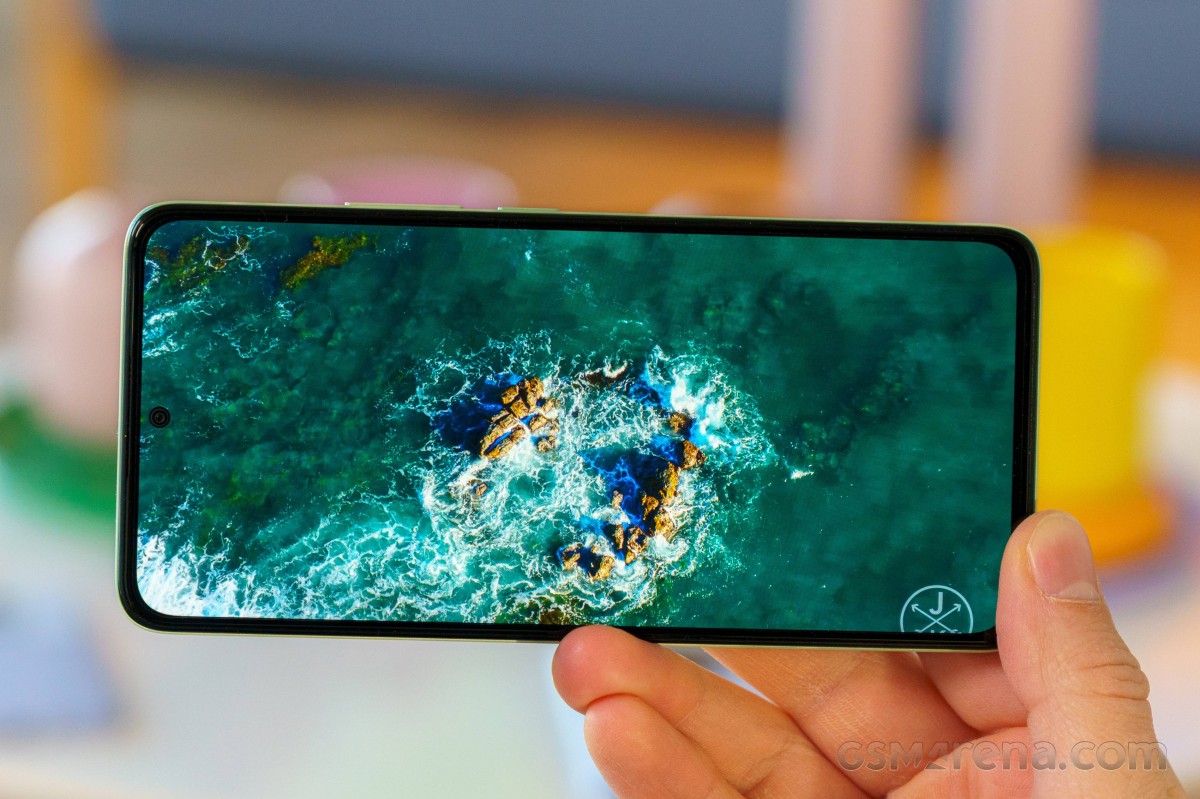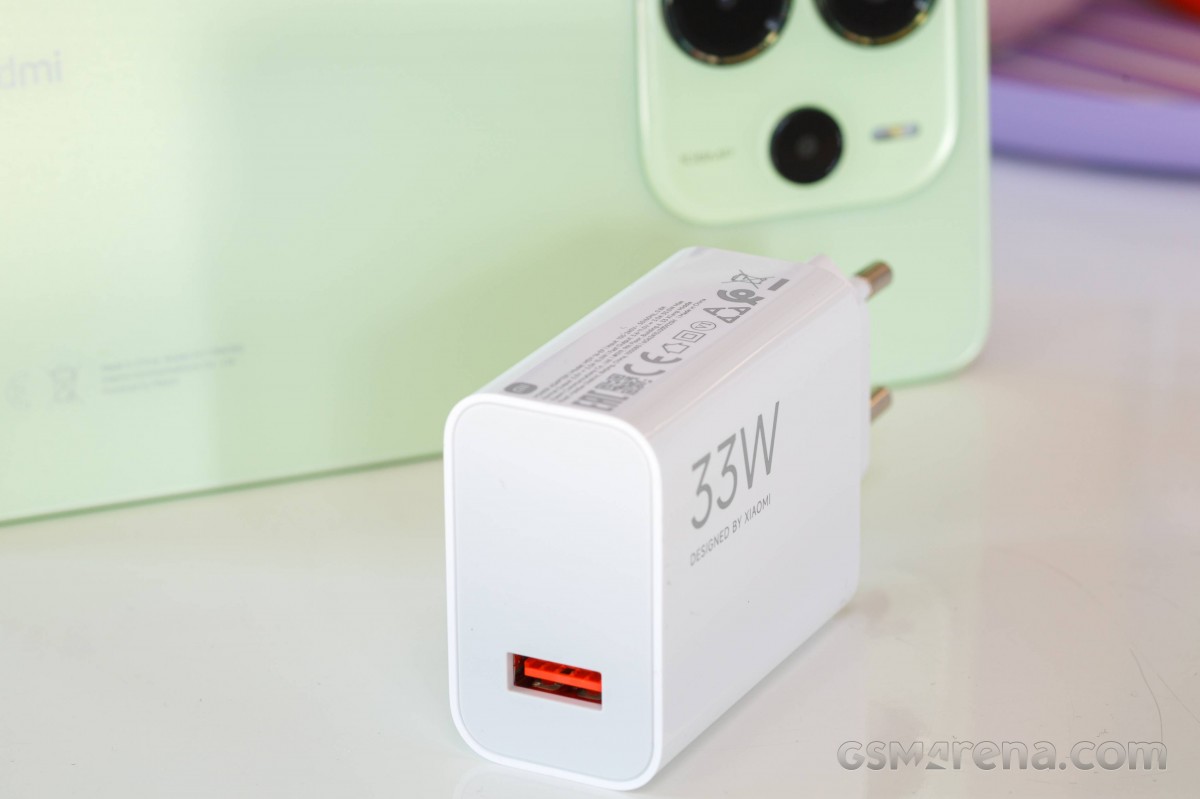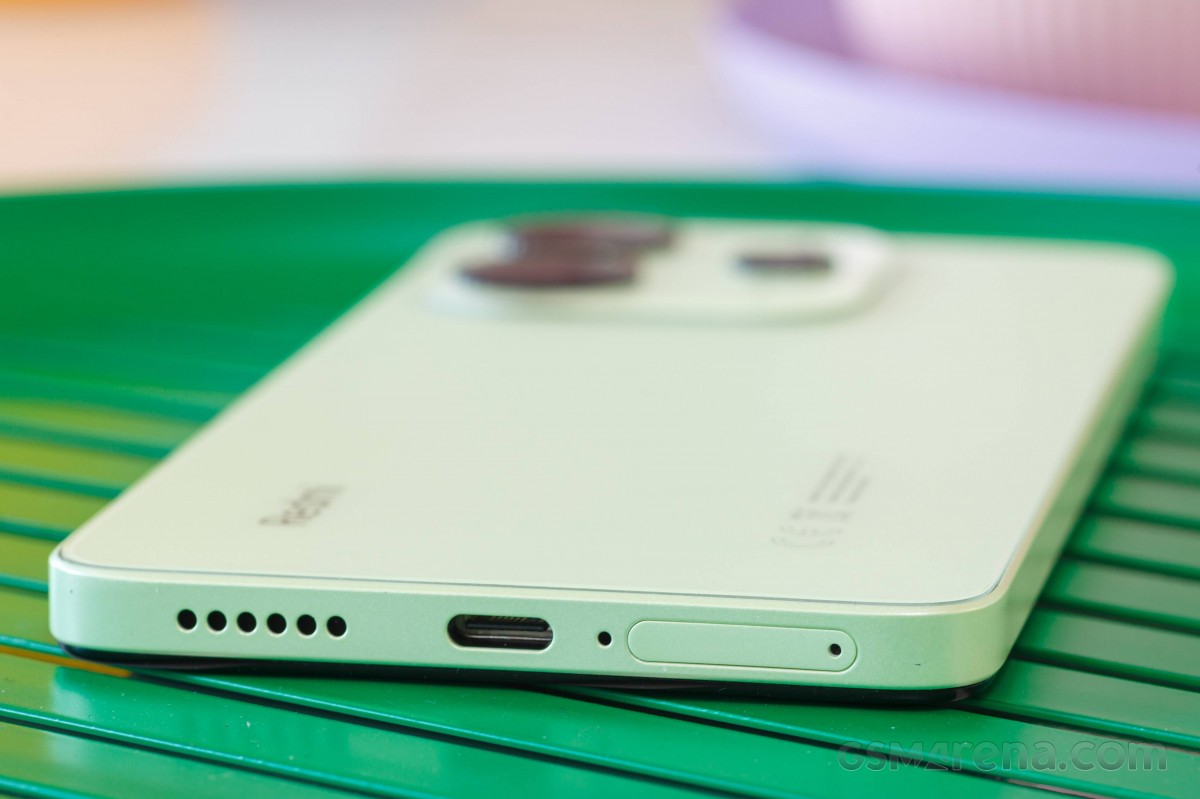Xiaomi Redmi Note 14 4G review

Display
The Redmi Note 14 4G has the same display as the Redmi Note 13 4G - a 6.67-inch AMOLED with 1,080 x 2,400 pixels resolution and 120Hz refresh rate support. It is protected by a flat Gorilla Glass 5 sheet.

There have been no upgrades since last year. Xiaomi promises up to 1,800 nits peak and up to 1,200 nits of maximum brightness.
We have completed our display measurements and the results are very good. We captured 471 nits of maximum manual and 1,312 nits of maximum automatic brightness - in line with Xiaomi's promise.
The minimum brightness we measured on our white color patch was 2.5 nits.
The display supports up to 120Hz refresh rate, and there are two refresh modes - Custom (choose between 120Hz or 60Hz refresh rates), and Default (automatic switching behavior).
The default (adaptive) refresh rate works as expected - it drops down to 60Hz when the screen shows static content. All streaming apps are capped at 60Hz for UI and streaming, too. And, of course, incompatible HFR apps such as the Camera app and Google Maps are always rendered at 60fps.
Adaptiveness is available for the dedicated 120Hz mode as well, but a few more apps, including the streaming ones, could go up to 120Hz as opposed to the default mode.
The only time we saw the screen using 30Hz mode (and it was just for tiny bit before it went to 60Hz) was for the always-on display, which is not really always-on, but lights up for 10s.
Finally, the screen does not support HDR, but all streaming apps serve 1080p or even 1440p content in standard dynamic range.
Battery life
The Redmi Note 14 4G is powered by a larger 5,500mAh battery, a 10% increase over the 5,000mAh cell inside the Note 13 4G.
The phone posted an Active Use Score of 12:47 hours, which is good. The battery times have improved across the board since the Redmi Note 13 4G.
Update, 18 Feb: Following further retesting, the call test result has been adjusted to a higher figure. We've updated the Active Use score below to reflect the new results.
Charging speed
The Redmi Note 14 4G supports up to 33W fast wired charging. The EU model ships without a charger, but the Asian one comes with a 33W Xiaomi power adapter. You can use any compatible 30W+ USB-PD charger, too.

We carried our test with the original 33W Xiaomi adapter.
The adapter refilled 27% of the dead battery in 15mins, 46% in 30mins, and 100% in 78 mins. Those numbers are fat enough, and we think most users would be happy with these times.
Xiaomi has two battery charging settings. You can choose between fast and standard charging, and you can force an 80% charging cap.
Speakers - loudness and quality
The Redmi Note 14 4G has stereo speakers and supports Dolby Atmos enhancement (on by default). The top speaker acts as an earpiece; it is quieter and lacks thump, but the audio balance is good.

The stereo speakers on the Redmi Note 14 4G scored a Very Good mark on our loudness test and we can confirm they sound quite loud. The audio quality is average, though, with well-presented high frequency range, okay-ish vocals but no bass.
Use the Playback controls to listen to the phone sample recordings (best use headphones). We measure the average loudness of the speakers in LUFS. A lower absolute value means a louder sound. A look at the frequency response chart will tell you how far off the ideal "0db" flat line is the reproduction of the bass, treble, and mid frequencies. You can add more phones to compare how they differ. The scores and ratings are not comparable with our older loudspeaker test. Learn more about how we test here.
Reader comments
- Joseph aluminium com
- 07 May 2025
- xjH
Because the 4G plus have side fingerprint while the 5g Plus have screen fingerprint
- Dobsonnote14
- 21 Apr 2025
- X}{
Same.. I prefer to use WiFi than internet











